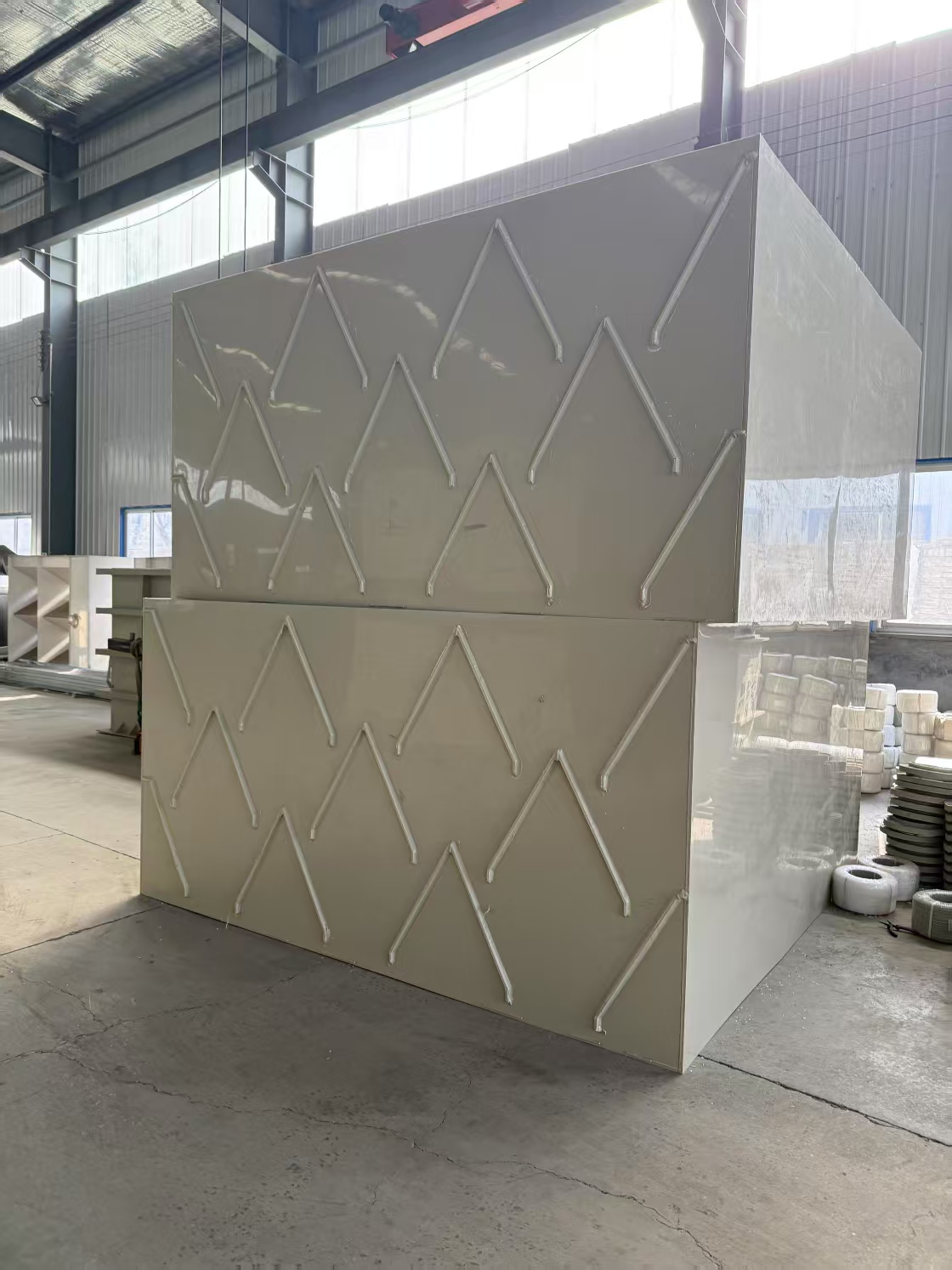The Anaerobic Tank PP Three-Phase Separator is a critical component made from virgin polypropylene (PP) material, primarily used in anaerobic reactors (e.g., UASB, EGSB, IC reactors) for wastewater treatment. It efficiently separates solids (sludge), liquids (water), and gases (biogas), ensuring stable sludge concentration, effective biogas collection, and improved effluent quality. Below is an overview of its structure, material properties, working principle, advantages, and precautions
1. Structure and Components
- Material: Made from reinforced engineering-grade polypropylene (PP), offering excellent corrosion resistance to acidic, alkaline, and organic wastewater environments.
- Key Components:
- Deflector Plates: Guide gas and sludge separation, preventing gas bubbles from disturbing the settling zone.
- Gas Collection Chamber/Pipe: Collects and discharges biogas, preventing gas accumulation that could affect separation efficiency.
- Settling Zone: Separates sludge and clear water via gravity, with sloped walls to facilitate sludge return to the reaction zone.
- Defoamer/Coalescing Plates: Reduces foam and promotes liquid droplet coalescence, enhancing gas-liquid separation.
2. Working Principle
- Three-Phase Fluid Separation:
- Wastewater enters the reactor base, mixing with sludge, where anaerobic reactions produce biogas.
- Gas bubbles carry sludge particles upward to the separator, where they hit the deflector plates, releasing gas while sludge settles back to the reaction zone.
- Gas is discharged via the collection chamber, while liquid enters the settling zone for further stratification (oil floats, water flows downward), and clear water exits through the overflow weir.
- Pressure Regulation:
- Low Pressure Issues: Can cause oil-water interface disruption; adjust the gas outlet valve and monitor the stabilization tower liquid level to restore pressure.
3. Material Properties and Advantages
- Corrosion Resistance: PP withstands pH 1-14 environments, with a lifespan exceeding 10 years, far surpassing traditional metal materials.
- Lightweight and Modular Design: Standardized modules simplify installation without requiring a fixed foundation, ideal for rapid deployment.
- High Separation Efficiency:
- High gas collection efficiency and solid retention, preventing sludge loss and supporting high-load reactor operation.
- Strong resistance to shock loads, with internal circulation designs enhancing organic matter treatment (e.g., COD loading rates of 15-30 kg/m³·d).
4. Applications
- High-Strength Organic Wastewater Treatment: Suitable for industries like food processing, pharmaceuticals, slaughterhouses, and papermaking.
- Biogas Recovery: Separated biogas can be recovered for energy use, reducing carbon emissions.
- Sludge Bed Reactors: A core component in UASB, EGSB, and IC reactors, ensuring stable system operation.
5. Precautions for Use
- Pressure Monitoring: Regularly check separator pressure to avoid low pressure from insufficient inflow or gas leaks, which can impair separation.
- Temperature and Material Protection: PP operates within -10°C to 80°C; avoid high temperatures that may cause deformation or mechanical impacts.
- Maintenance and Cleaning: Periodically clear sludge from the settling zone, inspect welds and interface seals to prevent blockages or leaks.
6. Technological Trends
- Composite Material Optimization: Some manufacturers use PP/FRP composites to enhance pressure resistance for higher-load conditions.
- Intelligent Control: Integration of sensors for real-time monitoring of oil-water interfaces and pressure, improving automation.
Summary
The Anaerobic Tank PP Three-Phase Separator, with its corrosion resistance, modular design, and high separation efficiency, is a vital component in wastewater treatment. Selection should consider wastewater characteristics (e.g., COD concentration, temperature) and reactor type to optimize structural parameters. Regular maintenance is key to extending service life, and for demanding conditions, composite materials or customized solutions may be considered.


